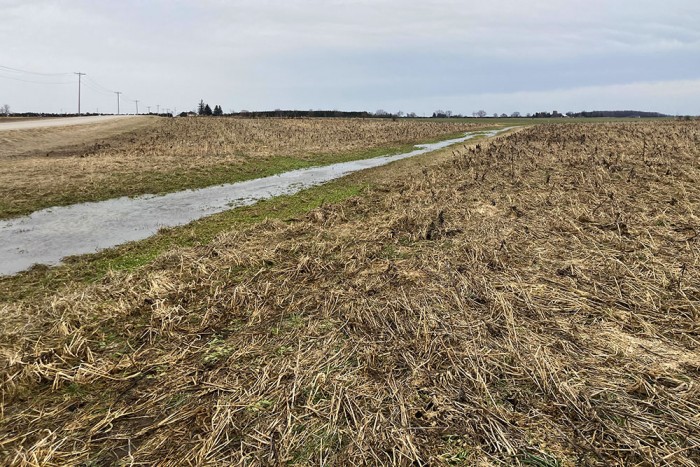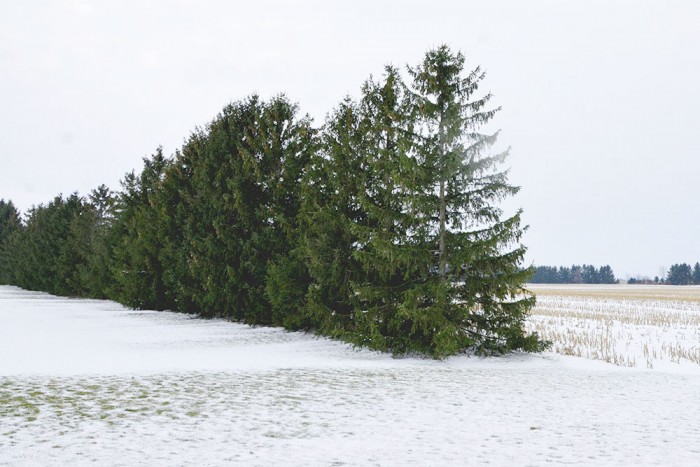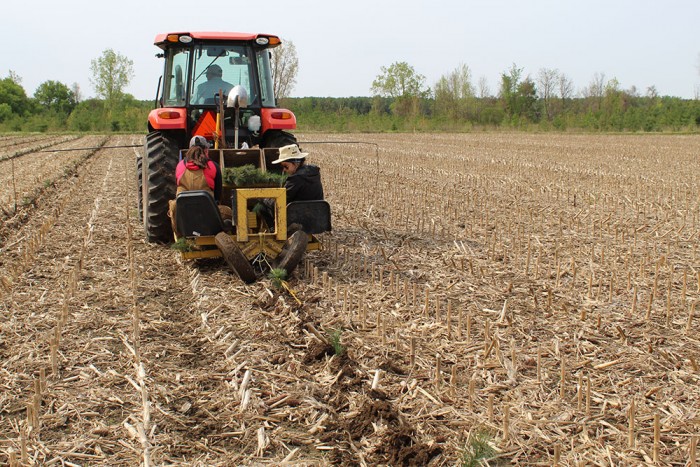Agricultural Stewardship
Our goal for agricultural stewardship is to work with watershed landowners to implement land management practices that protect and improve water quality and soil health, while maintaining or benefitting agricultural production. Implementing stewardship practices contributes towards watershed health by:
- Reducing soil erosion, which benefits water quality by helping to keep sediment, nutrients, and pathogens out of our water
- Providing water storage areas to help protect against natural hazards, such as flooding and provides filtration during high water events
- Provides wildlife and pollinator habitat and corridors
- ….and more!
Ausable Bayfield Conservation works with landowners to provide technical advice and to connect you with financial incentives to implement best management practices on your property.
To find out about stewardship enhancements you can make on your property – and to find out about grants and technical advice – please contact Nathan at Ausable Bayfield Conservation at nschoelier@abca.ca or phone 519-235-2610 or toll-free 1-888-286-2610.
Erosion Control

Agricultural erosion control structures, such as grassed waterways, or berms, otherwise known as Water and Sediment Control Basins (WASCoB) aid in intercepting or properly conveying waterflow to reduce sediment and nutrient loss, which helps to contribute towards improving water quality and reducing downstream erosion potential.
Tree Planting

A treed windbreak can reduce soil erosion caused by wind, reducing the amount of soil particles which are carried to nearby watercourses. Soil erosion caused by wind can be most easily observed during the winter months, when snowbanks adjacent to unprotected fields become dirt covered, often known as “snirt.”
Picture: single row drain buffer
A watercourse buffer helps to improve and protect water quality by filtering overland flow before it enters the watercourse, preventing in-stream erosion, as well as shading the water, which aids in cooling it and cooler water can retain higher levels of oxygen. Buffers are often established by planting a single row of trees, adjacent to the watercourse, but they may also be grassed buffers. Whether it is grassed or treed buffers, they provide additional benefits such as recreational trails, or wildlife corridors on your property.
Picture: squaring off an irregular-shaped field
As the agricultural practices across the watershed have shifted over the years, this has had a direct reflection on the landscape. Formerly, livestock and smaller fields were common, but today, farm equipment and field sizes are becoming larger. This provides the opportunity for tree planting to straighten field edges, and square-off irregular field edges, which has the benefits of tree planting while making the field more conducive to agricultural production.

Marginal, or fragile agricultural lands are lands that are prone to soil erosion and often contribute excess sediment and nutrients to watercourses, negatively impacting water quality. These lands may be steeply sloped, flood plains or areas where ground water is recharged. Agricultural production on fragile lands has limited profit, making these areas suitable for retirement. Often, fragile lands are well-suited for tree planting, and Ausable Bayfield staff are available to assist you with the planning, preparation, and tree planting process.
Cover Crops

Cover crops are important in maintaining soil quality and productivity on agricultural lands. Cover crops reduce soil erosion, reduce nutrient loss, and improve water infiltration, which helps to protect and improve water quality which not only benefits the landowner, but the community. To learn more about cover crops, visit our cover crop page.
Other best management practices that may apply to your farm include, but are not limited to:
- Decommissioning unused manure storages
- Decommissioning unused wells
- Diverting water away from manure storages, and livestock yards
- Restricting livestock access to watercourses and waterbodies
Ausable Bayfield stewardship staff are available to help you identify stewardship enhancements that you may be able to make on your property, and assist you in applying for eligible funding programs.